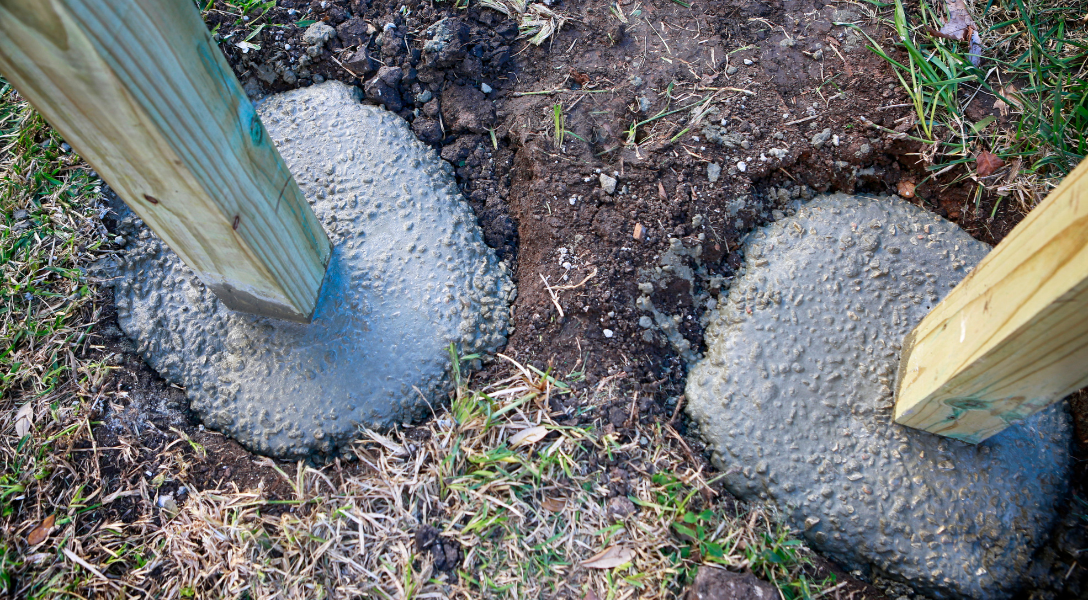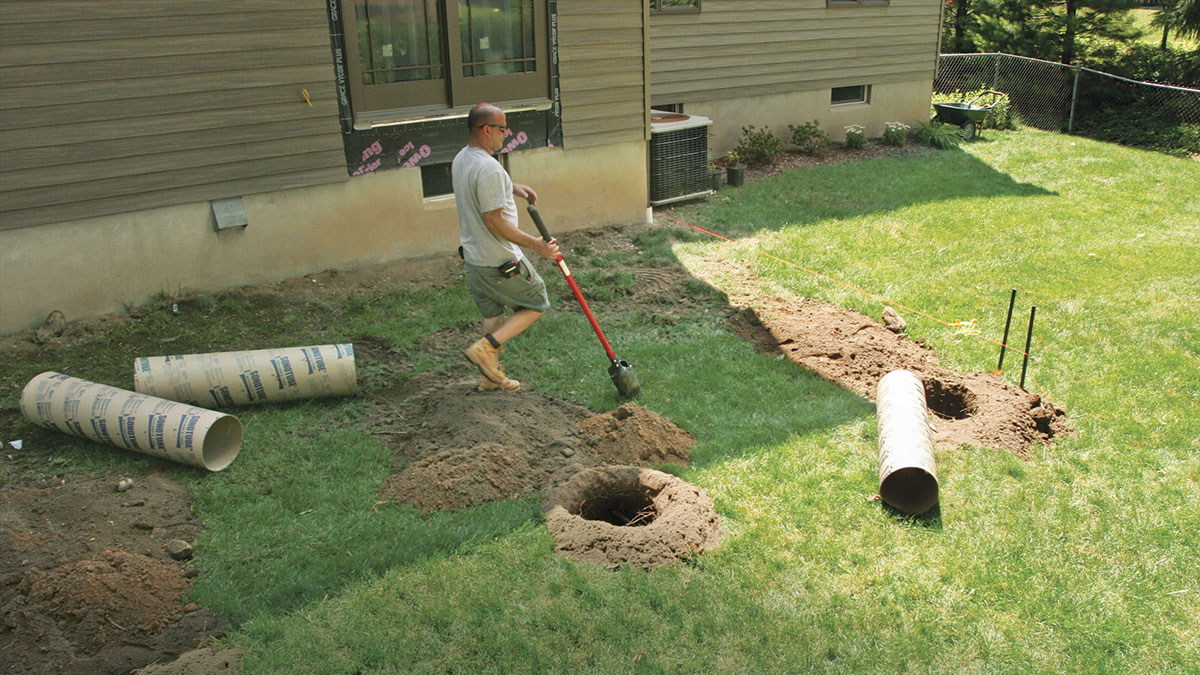Picking the Right Deck Footings for Security and Resilience
The longevity and safety and security of your deck depend greatly on the kind of footings you select, as they offer the important support and security to stand up to the test of time. In this discussion, we will certainly explore the numerous kinds of deck footings, think about the vital elements to consider when making a choice, and dig right into the pros and cons of different alternatives.
Sorts Of Deck Footings
There are a number of kinds of deck footings that can be made use of, each offering distinct benefits and factors to consider. One typical kind of footing is the concrete pier footing. These grounds include a cylindrical hole filled up with concrete, which gives a solid foundation for the deck blog posts. Concrete pier footings are relatively simple to set up and offer outstanding security, making them a preferred choice for numerous deck tasks.
These footings are installed by screwing them into the ground, which develops a safe and secure structure for the deck. They likewise enable for easy adjustment and progressing of the deck if required.
Additionally, some home builders go with precast concrete footings. These grounds are constructed from long lasting concrete and be available in various shapes and dimensions to suit various deck styles. Precast concrete footings are hassle-free to set up and offer a stable base for the deck framework.
Finally, an additional alternative is the post-in-anchor footing system. This kind of ground entails driving a metal anchor right into the ground and connecting it to the deck post. It offers flexibility in regards to positioning the deck articles and appropriates for decks with lightweight structures.
When picking the best type of deck ground, it is important to take into consideration variables such as dirt problems, deck tons, and local building ordinance (Deck Footings). Consulting with a specialist contractor or structural engineer can help make certain the proper ground is selected for a risk-free and stable deck
Elements to Consider When Choosing Grounds
When selecting the ideal footings for a deck, it is crucial to meticulously consider different aspects such as dirt conditions, deck tons, and adherence to neighborhood building ordinance. These aspects play a substantial role in guaranteeing the security and durability of the deck structure.
The type of soil on which the deck will certainly be constructed determines the kind of grounds called for. On the other hand, decks constructed on clay or extensive soils may need footings that can fit the soil's propensity to broaden and contract.
One more essential aspect is the deck tons. The weight of the deck, including the products used and any potential real-time tons such as furnishings or gatherings, must be considered when choosing footings. The grounds need to be developed to birth the weight of the deck and disperse it evenly to avoid any architectural problems or failings.
Last but not least, adherence to regional building regulations is vital. Building ordinance differ from region to area, and it is vital to comply with the specific needs set by the regional authorities. Deck Footings. These codes make certain that the deck is developed securely and meets the essential standards for architectural integrity and load-bearing capability
Concrete Grounds: Advantages And Disadvantages

Concrete grounds offer numerous benefits and negative aspects when made go to my blog use of as the structure for a deck. On the positive side, concrete footings supply excellent stability and longevity. Concrete is a strong and rigid material that can sustain hefty lots and stand up to different climate problems. It additionally has a lengthy life expectancy, making it a trustworthy option for long-term usage.
An additional advantage of concrete grounds is their adaptability. They can be poured right into different shapes and dimensions to accommodate numerous deck Bonuses styles and arrangements. Concrete footings can be tailored to fit the particular demands and demands of the deck framework.
Nonetheless, there are also some disadvantages to making use of concrete grounds. This can increase the general expense of the deck task and might require expert help.

Helical Piers Vs. Sonotubes: Which Is Better?
In taking into consideration the foundation alternatives for a deck, the comparison between helical piers and sonotubes is critical in figuring out the premium selection. Helical piers, also referred to as screw heaps, are steel shafts with helical plates attached to them. They are turned right into the ground using hydraulic equipment, supplying a stable and resilient structure for the deck. On the other hand, sonotubes are cylindrical types made from cardboard or fiber product that are loaded with concrete. They are placed in a hole explored the ground and offer support for the deck.
The helical plates on the piers develop a solid hold with the soil, shifting or protecting against any type of motion of the deck. Sonotubes, on the other hand, depend entirely on the concrete filling for security, which might not use the same level of toughness and resistance.
In regards to setup, helical piers are reasonably easier and faster to mount contrasted to sonotubes. The hydraulic machinery made use of to twist the piers right into the ground makes sure a effective and quick procedure. Sonotubes, on the other hand, require excavating holes and putting concrete, which can be lengthy and labor-intensive.
Furthermore, helical piers are an even more flexible alternative. They can be used in numerous soil conditions and can be readjusted or reinforced if required. Sonotubes, on the other hand, might require extra support, such as rebar, in specific dirt conditions or areas with high tons needs.
Choosing the Right Footings for Your Deck's Measurements
For optimal architectural integrity, it is essential to meticulously pick the suitable footings that line up with the measurements of your deck. The dimensions of your deck, including its size, elevation, and size, play a considerable duty in determining the type and size of footings required.
When selecting footings for your deck, it is necessary to think about the load-bearing capability of the soil. The weight of the deck, integrated with the weight of any type of furnishings or individuals on it, puts in a considerable pressure on the footings (Deck Footings). As a result, it is vital to pick grounds that can appropriately sustain this weight without moving or sinking gradually.
The dimension and form of the grounds ought to also be considered. Bigger decks with better measurements call for bigger footings to provide enough stability and support. The form of the footings, whether they are square or round, depends on the layout and design of the deck. Additionally, the deepness at which the footings are mounted must be identified based on the frost line in your area to avoid any heaving Learn More Here or changing because of freezing temperature levels.
Final Thought
In conclusion, picking the best deck footings is crucial for making sure stability and longevity. Aspects such as the kind of grounds, the deck's dimensions, and the pros and disadvantages of different choices should be taken into consideration. Concrete footings use toughness and durability, yet may be more costly and time-consuming to mount. Helical piers and sonotubes have their own benefits and disadvantages. Eventually, selecting the proper grounds for your deck's certain needs is necessary for a resilient and successful framework.
These grounds consist of a round opening loaded with concrete, which gives a solid foundation for the deck messages. Concrete pier grounds are reasonably very easy to install and provide exceptional security, making them a prominent choice for lots of deck tasks.
Precast concrete grounds are convenient to install and offer a stable base for the deck structure.
It uses versatility in terms of placing the deck articles and is appropriate for decks with light-weight structures.
Concrete footings provide several advantages and disadvantages when made use of as the structure for a deck.
Comments on “Structural Integrity Matters: Choosing the Right Deck Footings for Your Outdoor Job”